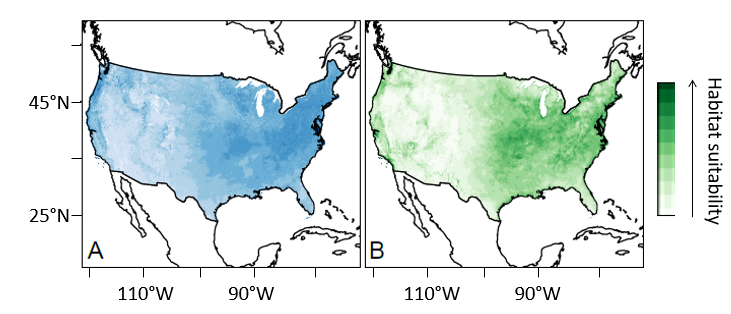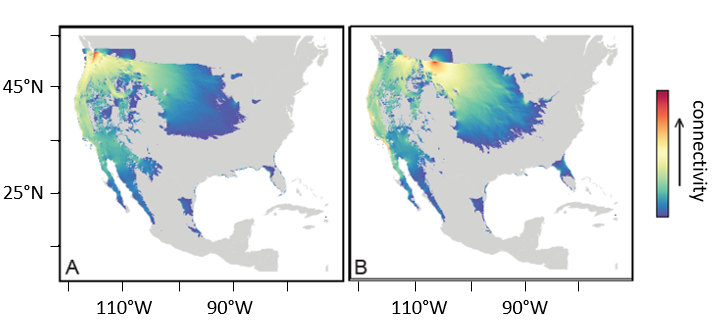Are intermediate routes taken by hybrids in migratory divides ecological inferior?
Considerable variation has been documented in the seasonal migration of birds and migratory divides (contact zones between populations that use different routes to navigate around ecological barriers) are an example of this.
Migratory divides could have important implications for ecological speciation as hybrids in divides take intermediate routes and it has been predicted that these routes will be ecologically inferior as they bring hybrids over barriers that parental forms avoid.
We provide the first test of this prediction using a well-characterized divide between coastal and inland subspecies of Swainson’s thrushes. Ecological niche models and analyses of landscape connectivity were used to predict suitable habitat for coastal and inland thrushes on migration and identify optimal migratory routes.
Consistent with predictions for migratory divides, niche models estimated lower habitat suitability in the intermediate range between the migratory ranges of parental forms (figure 1).

Furthermore, our models of landscape connectivity predicted optimal routes that circumvent this intermediate area (figure 2).

Birds taking intermediate routes used stopover sites of lower predicted habitat suitability than birds migrating on either side of the divide and overlapped less with optimal paths. These results support the prediction that intermediate routes of hybrids in migratory divides are ecologically inferior to those of parental forms. This finding suggests ecological differences are helping to maintain divides.
You can find more information about our research here: https://doi.org/10.1111/geb.13367